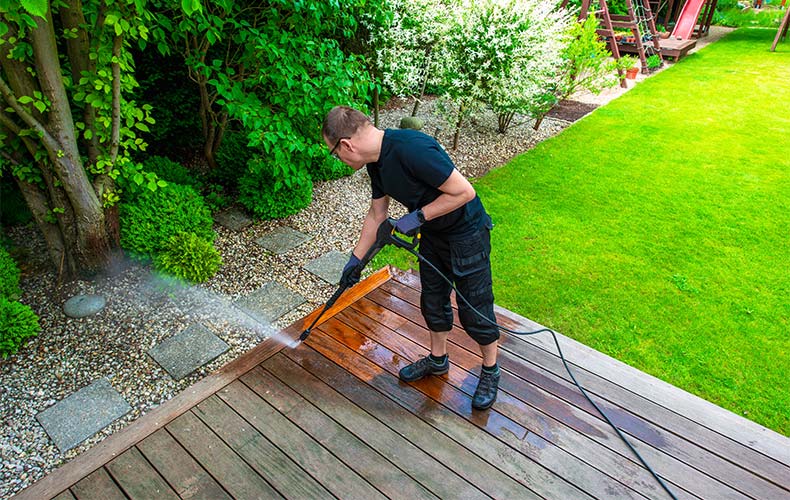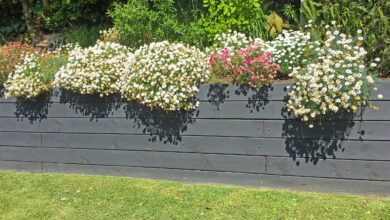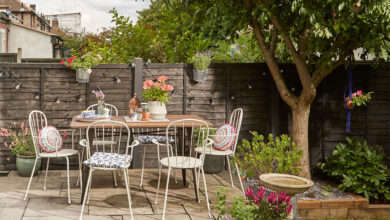How to Safely Pressure Wash Around Plants in Your Garden

Every garden collects moss, algae, and grime as seasons turn. A pressure washer restores brightness, yet the same force that clears paving can harm tender leaves.
With thoughtful care, you’ll clean confidently while keeping greenery safe.
Understand the Strength of Pressure
Pressure washers deliver sharp jets of water that cut through dirt embedded deep in stone, brick, or concrete.
Left alone, this build-up creates slippery surfaces that look dull and pose risks after rain. Regular washing restores colour and prevents accidents during damp spells.
Their greatest advantage is dealing with stubborn green film in shaded corners, where moisture lingers and hoses fall short.
Hard surfaces can take firm cleaning, but timber decking and decorative features need lighter handling. Knowing the threshold of each material makes cleaning both effective and safe.
Think of the washer as both helper and hazard. It can revive outdoor areas swiftly, yet in careless hands it strips foliage or splinters bark. Respecting this duality ensures you direct its strength where it’s truly useful.
When you treat it as a tool of precision rather than brute force, you’ll see how surfaces gleam while surrounding plants remain untouched.
Prepare with Care Before Cleaning
Preparation protects plants before the first spray begins.
Borders benefit from tarpaulins or breathable sheeting, which block stray water while allowing air to flow. Covers should be anchored loosely so they don’t trap heat or moisture underneath.
Pots, hanging baskets, and ornaments should be lifted out of the way. What’s more, permanent planting close to patios needs sturdier defence, such as shields made from plywood or rigid plastic.
Taking a quick photo of delicate plants gives you a baseline if you need to compare conditions later.
It’s equally wise to clear tools, toys, and garden furniture. The force of water can send them skidding or even cause injury if struck. A few calm minutes spent preparing the space avoids disruption and allows you to focus entirely on the task at hand.
In addition, preparation gives you a chance to notice details typically overlooked, such as loose paving stones, creeping roots, or small cracks that may need attention once cleaning is finished.
Master Technique for Gentle Precision
Skill develops with practice. Begin by testing the washer on a patch of paving far from plants, adjusting settings until you feel confident. Keep the lance angled at about 45 degrees, directing spray consistently away from borders.
Choose a wide spray pattern and hold the nozzle at least 60 centimetres from any greenery. Progress slowly in sections, allowing each pass to clean evenly without overexposure. The aim isn’t haste but steady rhythm, leaving surfaces clear without scarring.
Surfaces respond differently. Concrete often needs stronger pressure, while decking and softer stone require restraint. So, keep the spray moving in smooth arcs to avoid streaks or etched marks.
Over time, you’ll notice that a patient, balanced motion achieves far more than hurried bursts of power.
And as the light shifts through the day, you’ll see reflections on wet stone and know exactly where further passes are required. This helps you achieve a consistently even finish.
Manage Solutions with Plant Safety in Mind
Detergents can improve results, yet they must be chosen wisely.
Biodegradable, plant-safe products designed for outdoor use provide a reliable option. Stronger chemicals risk burning leaves and disturbing soil organisms that quietly sustain growth.
Before using any solution, dampen the nearby ground with clean water. This precaution dilutes run-off and lessens harm if splashes occur. Keep a watering can or hose to hand, ready to rinse foliage immediately should accidents happen.
Moreover, persistent stains justify professional help. Patio washing specialists bring equipment with precise controls and apply cleaning agents carefully, reducing risks to beds and borders.
By placing soil and plants at the forefront of decision-making, you keep the process as safe as it’s effective.
Meanwhile, rinsing the cleaned surfaces thoroughly ensures no residue lingers, protecting pets and wildlife that may wander across freshly washed paths.
Safeguard the Soil Beneath
Pressure washing doesn’t only affect surfaces—it unsettles the ground below.
Powerful jets can erode topsoil, exposing fine roots that anchor plants. To prevent this, spread ground sheets or plastic covers at least a metre beyond the work area.
On slopes, water naturally flows towards beds. Temporary trenches, wooden edging, or sandbags divert run-off safely elsewhere. Where roots are especially close to the surface, scatter gravel or a thin layer of woodchips to absorb surplus water before it soaks deeper.
Soil is alive, teeming with organisms that recycle nutrients and regulate moisture. Protecting it during cleaning ensures this unseen ecosystem continues to thrive, allowing plants to recover quickly once the task is finished.
In turn, when the soil remains stable, your garden retains its structure, avoiding unsightly erosion or compacted areas that could trouble growth later in the season.
Choose the Right Time for Success
Timing transforms the experience.
Early mornings let stray droplets evaporate gently, while cloudy skies reduce stress on leaves and keep surfaces streak-free. Cool air helps you work longer without rushing, turning the job into a measured routine.
Hot afternoons invite problems, as evaporation accelerates and plants lose water quickly. Windy conditions scatter spray unpredictably, undoing even the most careful shielding. For larger projects, spring and autumn bring the most reliable balance, as plants are robust, and weather is cool yet steady.
Checking the forecast and waiting for still, mild conditions gives you control from start to finish. When nature co-operates, cleaning feels less like a chore and more like a well-timed seasonal refresh.
And by repeating the task at these favourable times each year, you’ll notice the work becomes easier, with less build-up to tackle and far less strain on your plants.
Conclusion
Safe pressure washing depends on balance, not speed. With preparation, steady technique, and respect for living borders, you’ll clean effectively without causing harm.
Add patience to power, and your garden will emerge polished yet protected.
The result is a space renewed, where paving gleams and every plant continues to flourish.








